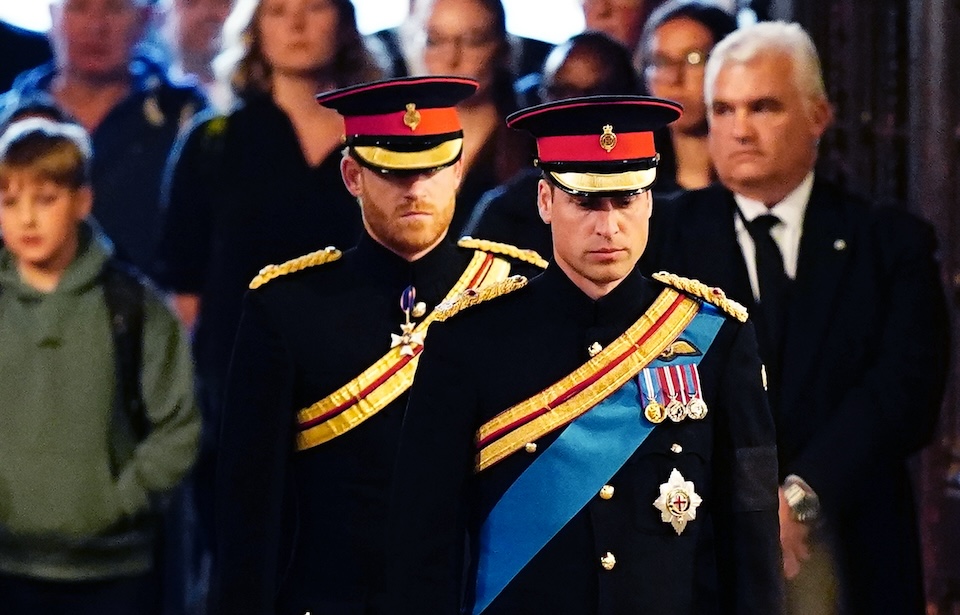What is the ‘ER’ cypher?
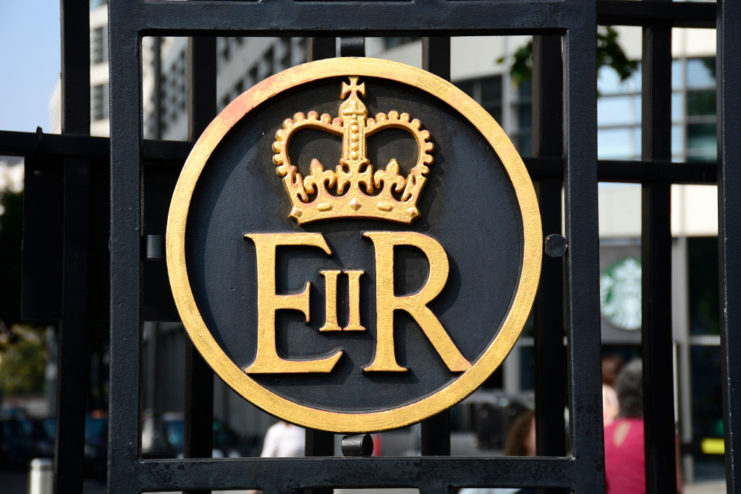
Before one can understand why the removal of the “ER” cypher upset Prince Harry, the meaning behind it must be explained. “ER” – or “EIIR” – were the Royal Cypher for Queen Elizabeth II. They stand for Elizabeth Regina, with “Regina” translating to “Queen” in Latin.
Each British monarch has their own distinct Royal Cypher, and it’s placed on government buildings, items related to the Royal Family, state documents and even mailboxes during their reign. For 70 years, the British public saw “ER” everywhere. Now that Elizabeth II’s son, Charles III, is now the King of England, the Royal Cypher will be replaced by “CR” and “CIIIR,” which stand for Charles Rex. In Latin, the latter translates to “King.”
The switch from “ER” to “CR” is expected to occur gradually.
King Charles III gave Prince Harry permission to wear his uniform
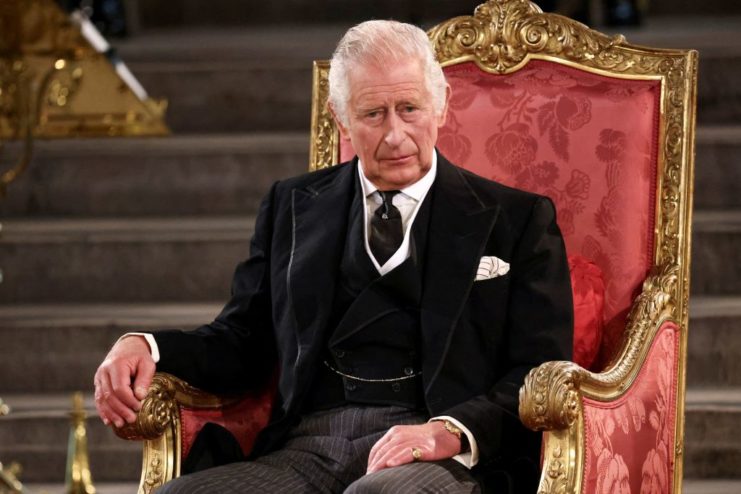
After stepping down from royal duties in 2020 to move to California with his wife, Meghan Markle, Prince Harry relinquished several honorary military titles: Commodore-in-Chief of Small Ships and Diving, Royal Naval Command; Captain General of the Royal Marines; and Honorary Air Commandant of RAF Honington. He had also previously served as Queen Elizabeth II’s personal aide-de-camp.
Since he resigned from royal duties, it was anticipated that Harry would attend the vigil for his grandmother at Westminster Hall in a morning suit, alongside Prince William and their cousins. However, in response to public criticism over allowing the disgraced Prince Andrew to wear his vice-admiral uniform at a similar vigil for Queen Elizabeth II, King Charles III later granted Harry permission to wear his military uniform.
The ‘ER’ cypher was removed from Prince Harry’s uniform
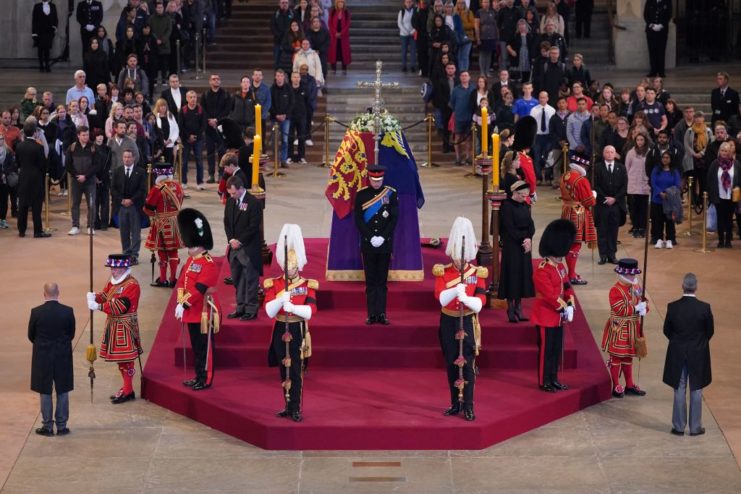
As Prince Harry, Prince William, and their cousins—Zara Tindall, Peter Phillips, Lady Louise Windsor, James, Viscount Severn, along with Princesses Beatrice and Eugenie—approached Queen Elizabeth II’s coffin for their 15-minute vigil on September 17, 2022, the missing “ER” cypher on Harry’s military uniform was notably apparent. Despite this, he wore his Afghanistan service medal alongside those commemorating the Golden, Diamond, and Platinum Jubilees.
An insider told The Sunday Times that Harry felt humiliated by the absence of his grandmother’s cypher, which remained visible on his brother’s uniform. He was so distressed that he even considered attending the vigil in a morning suit. This was his first time wearing military dress since 2020, and according to the insider, the lack of the “ER” on his shoulder left Harry feeling “devastated.”
“He is heartbroken,” the insider shared. “To remove his grandmother’s initials feels very intentional.”
Was the snub actually intentional?
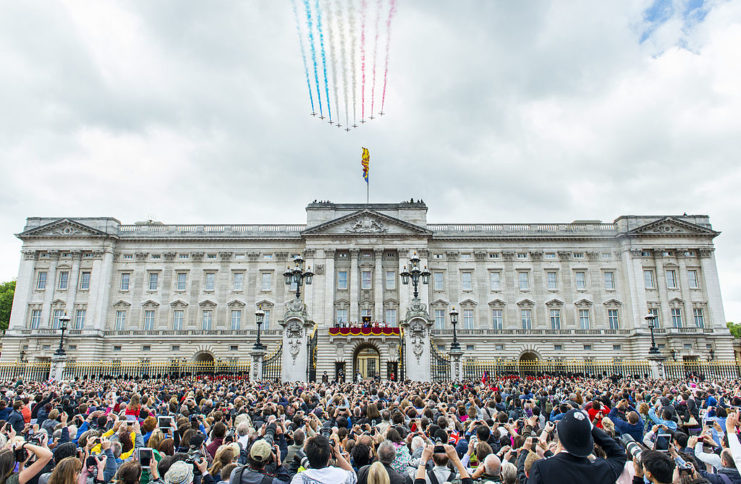
Many view the absence of the “ER” cypher from Prince Harry’s uniform as an intentional slight, but that doesn’t seem to be the case. Queen Elizabeth II’s initials have traditionally been worn only by those in active service to her and the British Monarchy.
According to the Royal Family’s dress code, working members who have served in the British Armed Forces are required to wear their uniforms for military events, including state funerals, Remembrance ceremonies, and Trooping the Colour.
Prince Harry’s service in Afghanistan
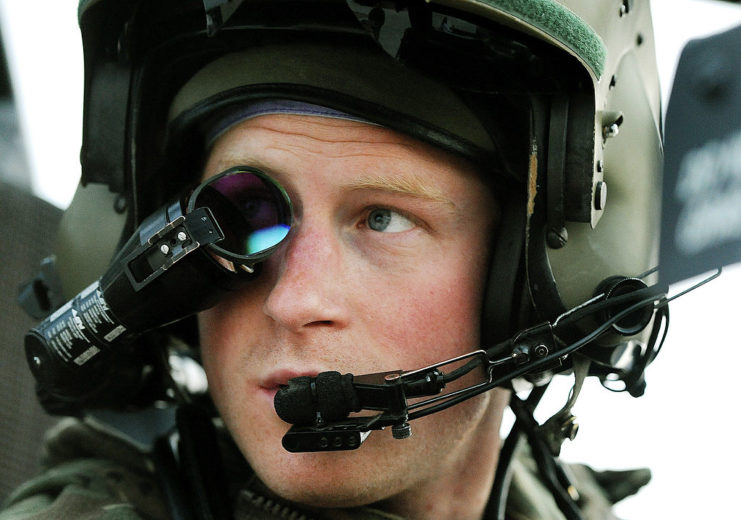
Prince Harry served in the British Army for 10 years, enrolling in the Royal Military Academy Sandhurst in May 2005 with Alamein Company. He completed his officer training a year later and was commissioned as a Cornet in the Blue and Royals, a regiment of the Household Cavalry. He was promoted to the rank of lieutenant two years later.
Following pressure from international media, the British Ministry of Defence revealed in February 2008 that Harry had been deployed to Helmand province, Afghanistan as a Forward Air Controller, with later reports stating he’d assisted Gurkhas in repelling an attack by insurgents. He also performed patrols in hostile areas. Almost immediately after the announcement was made, Harry was pulled out of the area over fears for his safety and that of his comrades.
A year after graduating from the Defence Helicopter Flying School at Royal Air Force (RAF) Shawbury in May 2010, Harry was promoted to captain. A few months later, in October 2011, he was transferred to a US military base in California to participate in helicopter gunship training. He subsequently returned to the UK, where he became a certified Apache pilot.
In September 2012, Harry return to Afghanistan, this time assigned to Camp Bastion as a co-pilot and gunner with 662 Squadron, 3 Regiment, Army Air Corps. Within days of his arrival, reports surfaced that threats had been made against his life. Following an attack on Camp Bastion that left two US Marines dead, he was moved to a safe location.
More from us: Queen Elizabeth II Snuck Out In Disguise to Join V-E Day Celebrations
Want War History Online‘s content sent directly to your inbox? Sign up for our newsletter here!
Harry completed his 20-week deployment and, two years later, retired from the British Army. He has since called his service with the Armed Forces “the happiest times of my life,” and his experience in Afghanistan led him to establish the Invictus Games, an international sporting event for injured active-duty and veteran service members.
